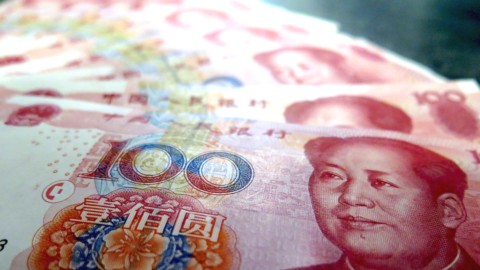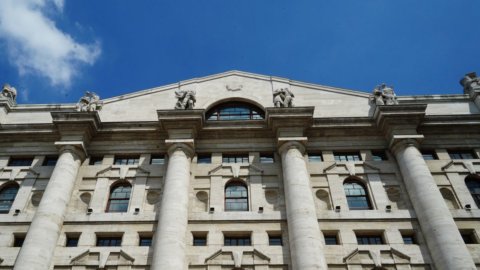The normalization of the Chinese economy is proving to be bumpier than expected, with a more abrupt slowdown since the third quarter of 2021. The China had quickly recovered from the first wave of the pandemic in the first quarter of 2020, with GDP growth reaching +2,3%, a low level but among the very few positive growth rates in the world in 2020. Since then, however, the growth has been modest and Euler Hermes suggests that momentum has slowed further this year. Industrial production grew by an average of +5,9% in July-August and should slow further in September, compared to an average of +7,8% in the second quarter. At the same time, also investments in fixed assets (+8,9% in August compared to +12,6% in the first quarter) and retail sales (+5,4% in July-August compared to +13,9% in the second quarter) slowed more than expected.
China's policy mix has been intentionally tightened since late 2020, but could ease in the future to help the economy weather the ongoing unknowns. Growing GDP, strong external demand and signs of domestic recovery convinced the authorities to focus on tackling long-term vulnerabilities rather than stimulating short-term growth. Consequentially, fiscal policy has tightened, with a cut in government spending and even a balanced budget in the first half of this year. Chinese policymakers are moving from a “countercyclical adjustment” framework to a “cross-cycle adjustment” framework, in which the policy mix is being eased cautiously so as to avoid stimulus now becoming financial risks in the future.
Increased regulatory scrutiny, especially in the real estate and energy sectors, is the main drag on economic growth. Stricter rules to contain debt in the real estate sector they were implemented in the second half of 2020. Generally tight regulation and credit conditions have led to a downturn in real estate sector activity since the end of 2020, as well as liquidity and solvency problems. In the future, analysts believe it is unlikely that the authorities will lift the restrictions put in place. This means that economic activity in the housing sector is likely to remain subdued in coming quarters with further defaults, even if a systemic crisis should be avoided.
Regulatory attention this year has also focused on the energy sector, with rationing imposed to meet climate goals. In the future, even if energy rationing is eased, industrial production will be negatively affected and energy costs will rise in the coming months (by 5-30% in heavy industry).
In this context, Chinese GDP growth forecasts have been revised downwards to +7,9% in 2021 and +5,2% in 2022, from +8,2% and +5,4% respectively. Concerns about the Chinese economic slowdown remain in the coming quarters, with risks still to the downside. The main downside risk: A widening of housing issues into other areas of the economy. This situation could be the result of excessively restrictive policies, for example on liquidity conditions and regulations. The weakness in confidence is expected to last longer, leading to a sharper-than-expected slowdown in real estate activity. Another downside risk: the rise of geopolitical tensions. New tensions arose in the region when a record number of Chinese military aircraft flew into the Taiwan area in early October 2021. The likelihood of an actual conflict erupting remains extremely slim as all sides believe the costs outweigh the benefits. However, the situation creates the conditions for further accidental escalation.
From a global supply perspective, the Chinese economic slowdown could further increase the cost of trade and lengthen delivery delays. In particular, electricity rationing measures are pushing up production costs, increasing the price of goods exported from China to the rest of the world and putting pressure on company margins, especially in Europe.
Potential new outbreaks of Covid-19 in China they could also push supply chain delays even longer. Furthermore, a sharp depreciation of the CNY that could offset these upward price pressures is not expected. In addition to the effects on prices, slower industrial and manufacturing activity in China could worsen manufacturing problems in the US and Europe.
From a global demand perspective, some commodity prices, emerging markets and exporters to China are expected to be impacted by the economic slowdown. A slower China is mostly bad for emerging markets, the Asia-Pacific region and some commodity exporters. Chile, Hong Kong, Peru, Australia and South Africa could be at risk, as exports to China in construction and metals account for more than 2% per category. Conversely, exporters of energy and more precisely of thermal coal (particularly in Indonesia, Malaysia and Australia) are likely to see increased demand in the context of the ongoing energy crisis in Beijing.
Beyond the short to medium term, countries dependent on Chinese demand will face a lower growth regime (which started before Covid-19) and the risks that come with it. Indeed, analysts suggest that China's GDP growth will average between +3,8% and +4,9% over the next decade (after +7,6% in the 2010s). The shift in China's economic model could also alter long-term export exposures, with losses for those dependent on heavy industry and construction, while consumer and high-tech goods could benefit.
From the point of view of the financial markets, the Chinese economic slowdown could also weigh on equities, with a potential negative effect on consumer wealth. In 2020, 75 companies in the S&P 500 index (20% of total market capitalization) and 100 companies in the STOXX Europe 60 index (30% of total market capitalization) had sales in China. Among these companies, China accounted for 15% of total revenues in the US and 12% in Europe. Hence, a Chinese economic slowdown could weigh on capital markets, with an impact on households and private consumption through a negative wealth effect. The securities in question amount to 25% of household financial assets Germany, at 28% in France, at about 40% in Italy e Spain and up to 55% in the Use.
Could worries about China's real estate sector serve as a wake-up call for other countries? In the study, the analysts found no other companies that present a risk of a similar magnitude to Evergrande. A further form of financial fallout, even if widespread sentiment contagion is avoided (in both equities and corporate credit), is at the real estate sector level. The current events have put the industry under tight scrutiny not only in China, but also in the rest of the world. Faced with the uncertainties surrounding the post-Covid recovery, the long-term imprint that the crisis will leave on the sector is still uncertain, given the transition to remote working and the increase in property prices.





